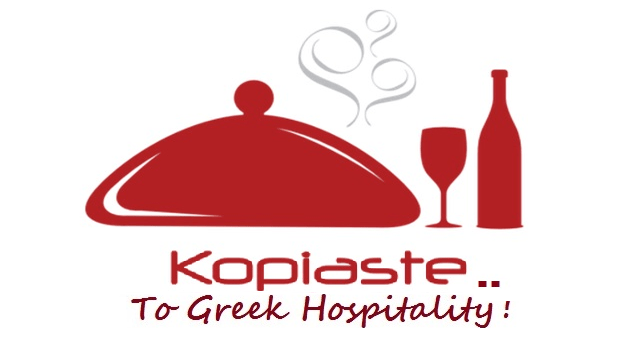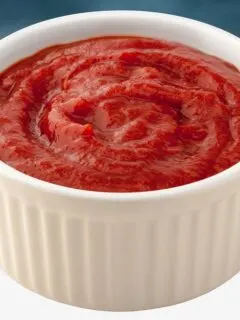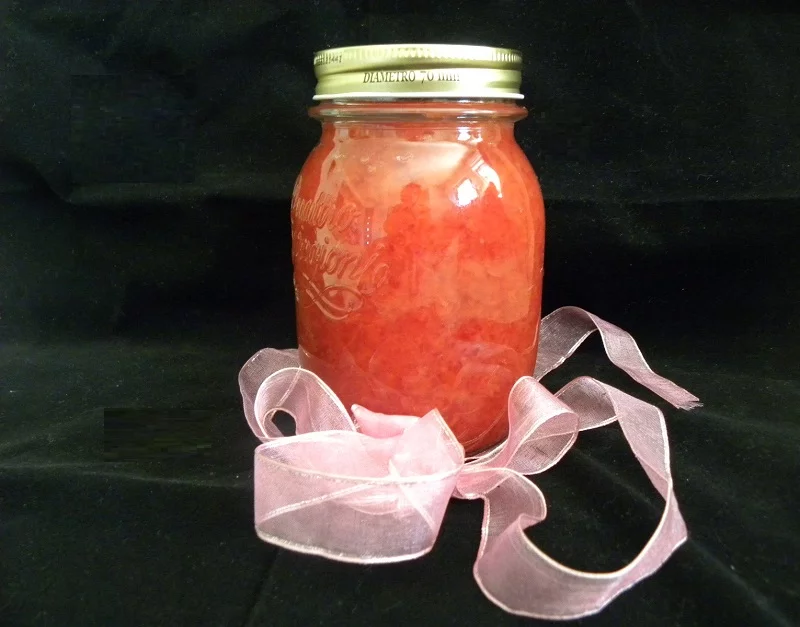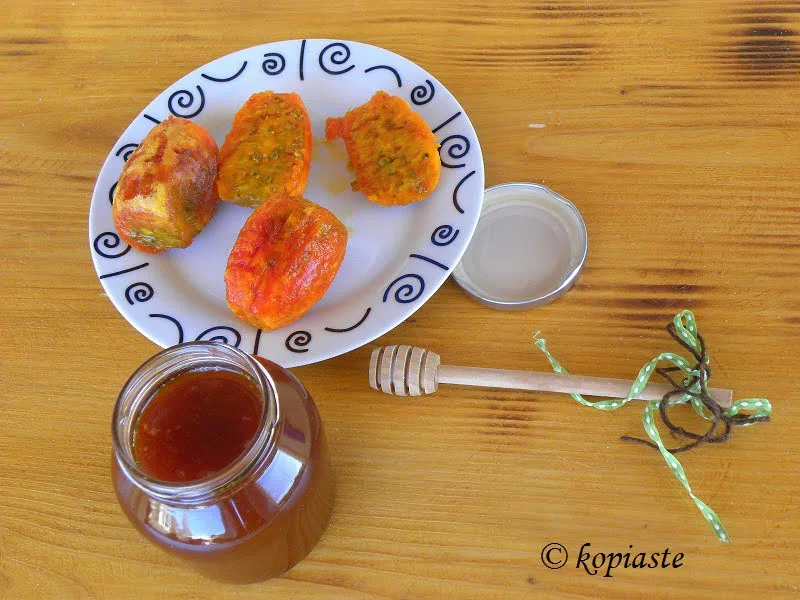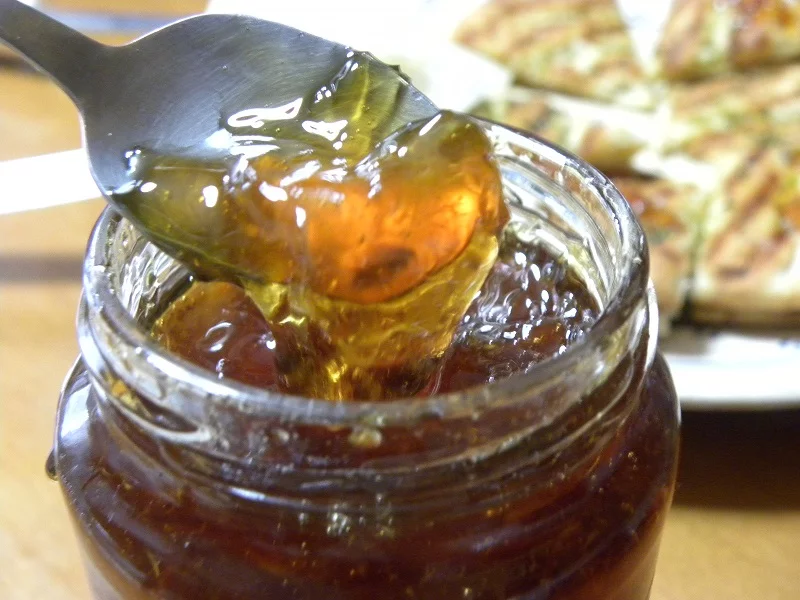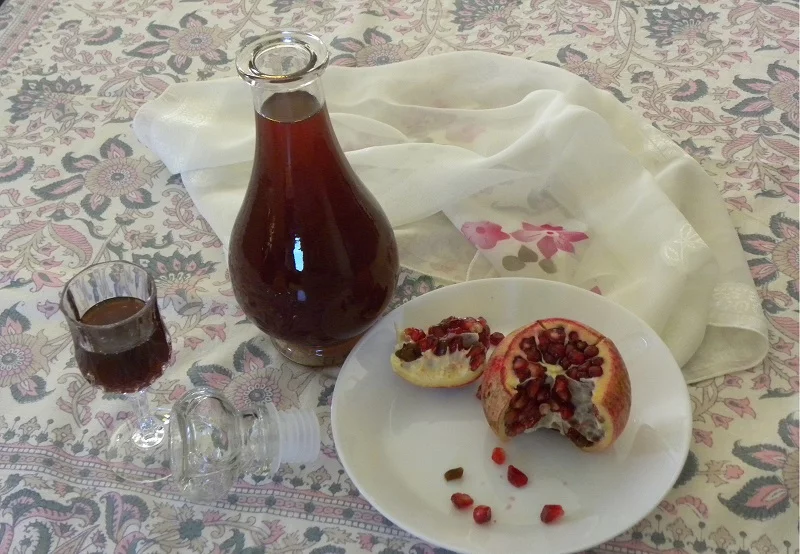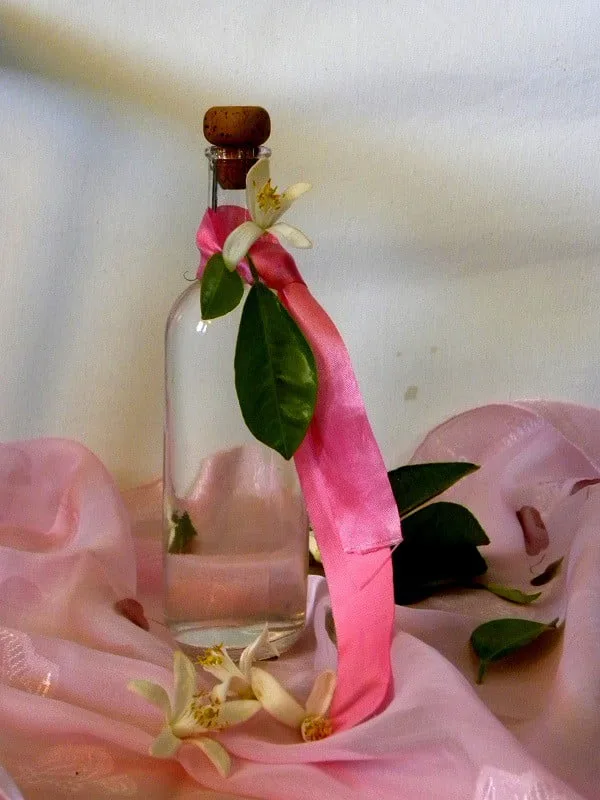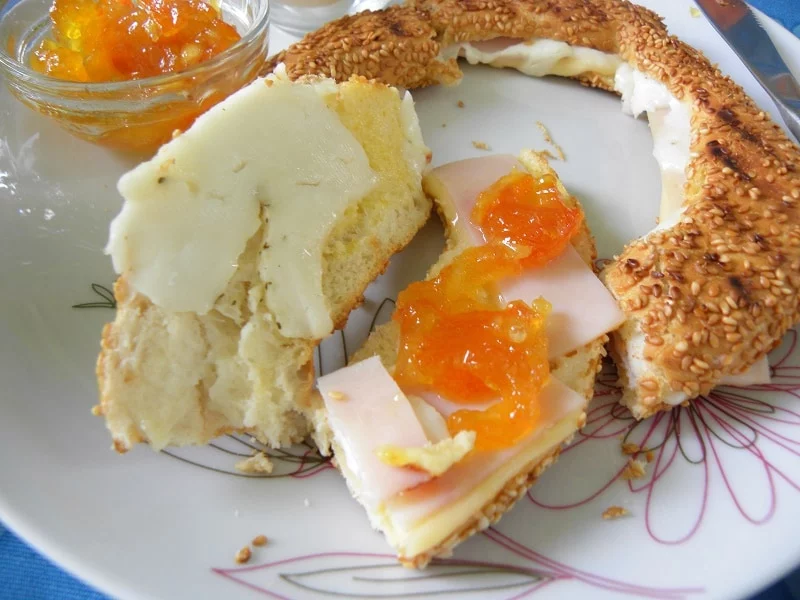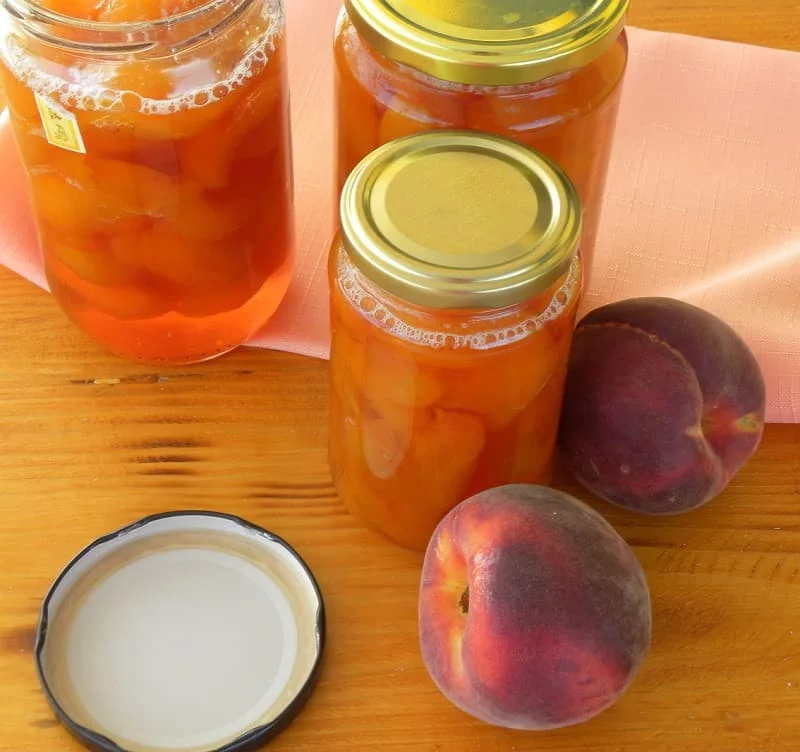A good Homemade Greek Tomato Sauce can be used in many ways. Make a big batch of this delicious tomato sauce and have it on hand whenever you need it.
Preserving
Quince Jam or Jelly (in Greek called Marmelada Kydoni pr. kee-DHO-knee) is a traditional Greek Fall jam, using arbaroriza (fragrant geraniums) to flavour it.
Prickly pear honey syrup is a delicious syrup made with the juice of the prickly pear fruit and sugar, honey or other sweetner.
Bergamot marmalade is the best of all citrus marmalades. It is precious as it has the most aromatic flavour that you can ever imagine. In this recipe it is made with the leftover fruit mixed with some bergamot peel.
Pomegranate liqueur like all other liqueurs is easy to make but you have to be patient and wait for the fruit to macerate in the alcohol for about a month, then prepare a simple sugar syrup and combine them. After that, you can drink it right away but as it matures it gets even better.
Mulberry Lavender Jam with Honey is not only a very healthy combination of ingredients, which marry perfectly together but also one of the most aromatic and delicious jams I have ever made.
The Citrus Floral Preserve is made with the Petals of Sevillle Orange Flowers cooked with sugar, water and lemon juice. It goes without saying that you can use other citrus petals.
Citrus Blossom Water is the distilled water from the flowers of bitter or sour oranges, also known as Seville Oranges. This is used as an aromatizer in many Mediterranean desserts.
Mandarin Marmalade is one of the most delicious and aromatic citrus marmalades. It’s delicious on toasted bread for breakfast but also between cake layers or with other desserts.
Peach compote is a simple and delicious dessert, made of whole or pieces of fruit in sugar syrup. It’s very easy to make and can be eaten as a simple dessert on its own, or it goes well with ice cream, with Greek yoghurt, served with crepes or pancakes, on top of puddings, etc.
